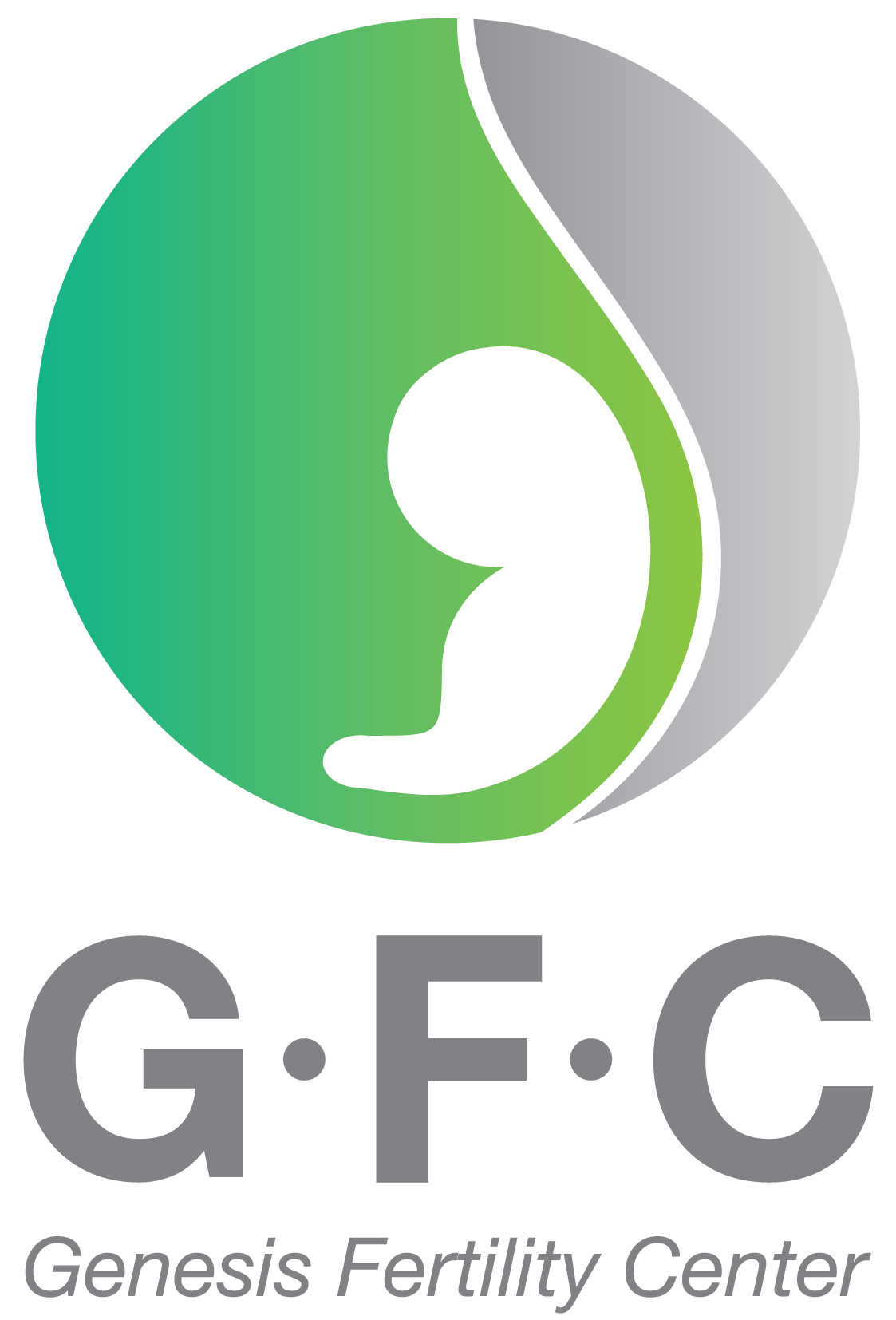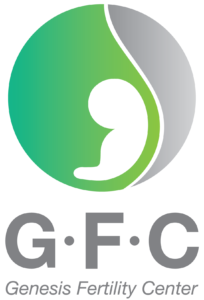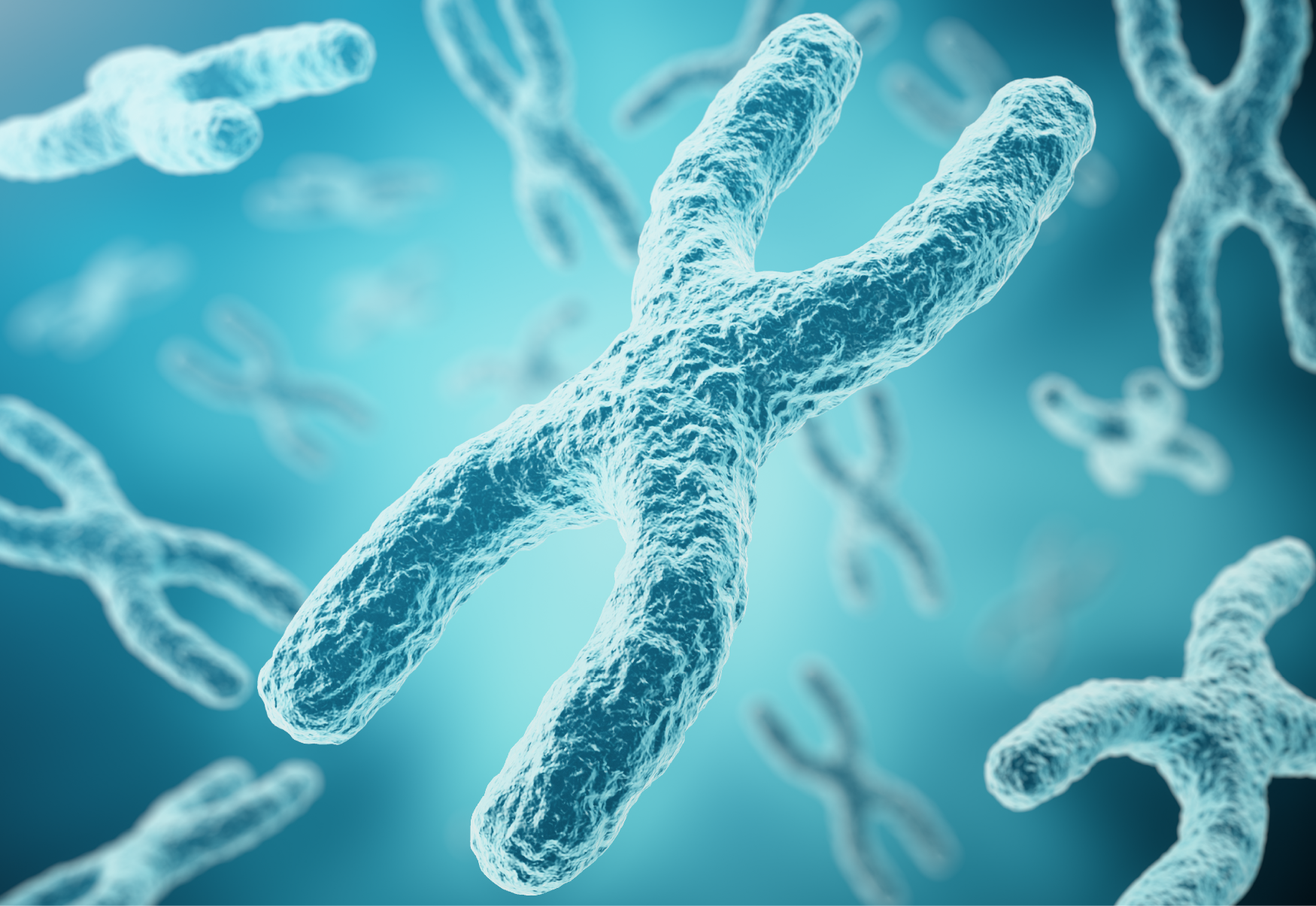ตรวจโครโมโซม PGT-A BY NGS
การตรวจโครโมโซมตัวอ่อนก่อนการฝังตัว
การตรวจพันธุกรรมตัวอ่อน คืออะไร
การตรวจพันธุกรรมตัวอ่อน คือการตรวจโครโมโซมหรือสารพันธุกรรมของตัวอ่อนก่อนที่จะย้ายเข้าสู่โพรงมดลูกของฝ่ายหญิง ในขั้นตอนการทำ ICSI/IVF ทำให้สามารถเลือกตัวอ่อนที่ปราศจากความผิดปกติทางพันธุกรรมอันก่อให้เกิดโรคต่างๆได้
การคัดกรองความผิดปกติของโครโมโซมตัวอ่อนก่อนการฝังตัว (PGD/NGS) เหมาะสมกับใครบ้าง
- สามี หรือ ภรรยาคนใดคนหนึ่งหรือทั้งสองคนมีพันธุกรรมผิดปกติซึ่งอาจถ่ายทอดไปสู่ทารกได้โดยการถ่ายทอดนั้น มีความเสี่ยงชัดเจนว่าอาจเป็นเหตุให้ทารกที่เกิดขึ้นไม่อาจมีชีวิตรอดหรือมีชีวิตเช่นคนปกติได้ (PGD: Preimplantation Genetic Diagnosis)
- สามีและภรรยาที่ไม่มีความผิดปกติทางพันธุกรรมอาจทำการตรวจพันธุกรรมตัวอ่อนได้ในกรณีต่อไปนี้(PGS: Preimplantation Genetic Screening)
- มีประวัติการตั้งครรภ์ที่ทารกมีความผิดปกติทางพันธุกรรมรุนแรงและความผิดปกตินั้นอาจป้องกันได้ด้วยการตรวจคัดกรองพันธุกรรมของตัวอ่อน
- มีบุตรที่ป่วยเป็นโรคซึ่งอาจรักษาได้ด้วยการปลูกถ่ายเซลล์ต้นกำเนิดจากบุคคลอื่นที่มีความเข้ากันได้ของเนื้อเยื่อ (HLA Matching) ซึ่งการตรวจ HLA ของตัวอ่อนนี้จะเป็นประโยชน์โดยสามารถนำ เซลล์ต้นกำเนิดจากเลือดในสายสะดือเมื่อแรกคลอดไปใช้รักษาบุตรคนที่ป่วยและมีเนื้อเยื่อที่เข้ากันได้
- มีประวัติการแท้งบุตรก่อนอายคุรรภ์ 12 สัปดาห์ตั้งแต่2ครั้งขึ้นไปหรือในกรณีที่มีผลการตรวจยืนยันว่าการแท้งในครั้งก่อนมีสาเหตุมาจากทารกมีความผิดปกติทางพันธุกรรม
- ฝ่ายหญิงมีอายุตั้งแต่ 35 ปีขึ้นไปและมีข้อบ่งชี้ทางการแพทย์ว่า ตัวอ่อนอาจมีความเสี่ยงต่อความผิดปกติทางพันธุกรรม
- ไม่ตั้งครรภ์ 2 คร้ังติดต่อกัน ในการให้บริการเกี่ยวกับเทคโนโลยีช่วยการเจริญพันธุ์ทางการแพทย์
- มีประวัติการตั้งครรภ์ที่ทารกมีความผิดปกติทางพันธุกรรมรุนแรงและความผิดปกตินั้นอาจป้องกันได้ด้วยการตรวจคัดกรองพันธุกรรมของตัวอ่อน
- มีบุตรที่ป่วยเป็นโรคซึ่งอาจรักษาได้ด้วยการปลูกถ่ายเซลล์ต้นกำเนิดจากบุคคลอื่นที่มีความเข้ากันได้ของเนื้อเยื่อ (HLA Matching) ซึ่งการตรวจ HLA ของตัวอ่อนนี้จะเป็นประโยชน์โดยสามารถนำ เซลล์ต้นกำเนิดจากเลือดในสายสะดือเมื่อแรกคลอดไปใช้รักษาบุตรคนที่ป่วยและมีเนื้อเยื่อที่เข้ากันได้
- มีประวัติการแท้งบุตรก่อนอายคุรรภ์ 12 สัปดาห์ตั้งแต่2ครั้งขึ้นไปหรือในกรณีที่มีผลการตรวจยืนยันว่าการแท้งในครั้งก่อนมีสาเหตุมาจากทารกมีความผิดปกติทางพันธุกรรม
- ฝ่ายหญิงมีอายุตั้งแต่ 35 ปีขึ้นไปและมีข้อบ่งชี้ทางการแพทย์ว่า ตัวอ่อนอาจมีความเสี่ยงต่อความผิดปกติทางพันธุกรรม
- ไม่ตั้งครรภ์ 2 คร้ังติดต่อกัน ในการให้บริการเกี่ยวกับเทคโนโลยีช่วยการเจริญพันธุ์ทางการแพทย์
ขั้นตอนการตรวจพันธุกรรมตัวอ่อน
ขั้นตอนเหมือนกระบวนการทำเด็กหลอดแก้วทุกประการ ตั้งแต่เริ่มต้นกระตุ้นไข่จนถึงระยะเตรียมปฏิสนธิเป็นตัวอ่อนโดยทั่วไปแล้วนั้นระยะของการเจริญเติบโตของตัวอ่อนที่เหมาะสมสำหรับการแยกเอาเซลล์ออกมาตรวจวินิจฉัยทางพันธุกรรมนั้นมี 3 ระยะ ได้แก่
- ระยะของไข่ก่อนการปฏิสนธิ หรือตัวอ่อนในระยะปฏิสนธิก่อนการแบ่งตัว โดยการแยกเอาส่วน Polar Body ของเซลล์ไข่ หรือตัวอ่อนในระยะปฏิสนธิก่อนการแบ่งตัวออกมาสำหรับตรวจทางพันธุกรรม
- ตัวอ่อนในระยะแบ่งตัววันที่ 3 หลังการปฏิสนธิ (Clevage Stage)
- ตัวอ่อนในระยะบลาสโตซิสต์ (Blastocyst Stage) โดยมากแล้วแพทย์มักตรวจตัวอ่อนในระยะบลาสโตซิสต์เนื่องจากมีจำนวนเซลล์มากพอที่จะดึงออกไปตรวจได้โดยกระทบกับการเจริญเติบโตของตัวอ่อนน้อยที่สุด และพบความแตกต่างทางพันธุกรรมระหว่างเซลล์แต่ละเซลล์หรือที่เรียกว่า Mosaicism น้อยกว่าการตรวจตัวอ่อนในระยะแบ่งตัว หลังจากได้ตัวอ่อนและเลี้ยงจนได้ระยะที่ตัวอ่อนแบ่งเซลล์มีจำนวนเซลล์มากเพียงพอซึ่งมักเป็นระยะวันที่ 3-5 หลังปฏิสนธิแล้วจึงทำการดูดเซลล์ของตัวอ่อนแต่ละตัวส่งตรวจทางพันธุศาสตร์เพื่อระบุสถานะของตัวอ่อนว่าปกติหรือไม่ จากนั้นจึงเลือกตัวอ่อนที่ไม่เป็นโรคย้ายกลับเข้าสู่โพรงมดลูกเพื่อให้เกิดการฝังตัวและตั้งครรภ์ ในปัจจุบันเป็นที่ยอมรับกันว่าทารกที่ผ่านการตรวจทางพันธุกรรมนี้ เมื่อคลอดจะไม่มีความแตกต่างจากทารกที่มาจากการตั้งครรภ์โดยธรรมชาติ ดังนั้นการตรวจดังกล่าวจึงเป็นการตรวจพันธุกรรมของเซลล์ที่เป็นเสมือนเพียงตัวแทนของเซลล์ทั้งหมดของตัวอ่อน การตรวจนี้จึงมีความละเอียดอ่อนและยุ่งยากกว่าการตรวจพันธุกรรมจากเลือดหรือเนื้อเยื่ออื่นๆเพราะปริมาณสารพันธุกรรมใน 1 เซลล์นั้นมีจำนวนน้อยมาก การตรวจจึงต้องอาศัยความละเอียดอ่อนใช้เวลาและอยู่ในมือของแพทย์และนักวิทยาศาสตร์ที่มีประสบการณ์สูง เพื่อให้เกิดความถูกต้องแม่นยำและรบกวนตัวอ่อนน้อยที่สุด
Blastocentesis
คือการดูดน้ำในตัวอ่อนระยะบลาสโตซิสต์ (Blastocyst Fluids; BFs) ไปเพื่อทำการตรวจวิเคราะห์โครโมโซมของตัวอ่อนนั้นๆ เนื่องจากปัจจุบันได้มีการตรวจพบว่าน้ำในตัวอ่อนระยะบลาสโตซิสต์นี้มี cell-free DNA อยู่ในปริมาณมากพอที่จะนำไปตรวจวิเคราะห์โครโมโซมต่อได้ โดยการดูดน้ำในตัวอ่อนไปตรวจแทนที่จะดูดเซลล์ตัวอ่อน (Blastomere) หรือเซลล์เนื้อรก (Trophectoderm)
เหมือนอย่างที่เคยทำมานั้นมีข้อดีคือ ช่วยลดการรบกวนการเจริญเติบโตของตัวอ่อนจากการลดส่วนของเซลล์ที่ถูกดูดไปตรวจลงทำให้ตัวอ่อนเติบโตและพัฒนาไปเป็นตัวอ่อนที่มีคุณภาพดีมากขึ้นได้ นอกจากนั้นการดูดน้ำในตัวอ่อนระยะบลาสโตซิสต์ ซึ่งเป็นระยะที่ตัวอ่อนโตเต็มวัยที่สุดก่อนย้ายเข้าสู่โพรงมดลูก เป็นการลดโอกาสการเกิดความแตกต่างทางพันธุกรรมระหว่างเซลล์แต่ละเซลล์ลงจากการตรวจวิธีเดิมซึ่งอาจตรวจตัวอ่อนตั้งแต่อายุวันที่ 3 โดยการตรวจตัวอ่อนที่อายุน้อยนั้นจะมีโอกาสเกิด Mosaicism มากขึ้นได้และเมื่อเปรียบเทียบผลการตรวจระหว่างการตรวจโครโมโซมจากน้ำในตัวอ่อนกับการดูดเซลล์ในระยะบลาสโตซิสต์ไปตรวจแล้วนั้น พบว่าให้ผลลัพธ์ที่ถูกต้องใกล้เคียงกันมากจนเป็นที่น่าพึงพอใจ
เทคนิคการตรวจพันธุกรรมตัวอ่อน
การตรวจพันธุกรรมตัวอ่อนนั้นสามารถทำได้หลายวิธี แต่ละวิธีจะมีความถูกต้องแม่นยำต่างกันทาง Genesis Fertility Center ได้มีการคัดเลือกวิธีการตรวจพันธุกรรมตัวอ่อนที่ดีที่สุด ทันสมัยและมีความถูกต้องแม่นยำที่สุดมาใช้ใน การรักษา เพื่อให้คู่สมรสที่เข้ามาทำการรักษากับทางคลินิกมั่นใจได้ว่าท่านได้รับการดูแลด้วยเทคนิคที่ดีที่สุดที่มีอยู่ในปัจจุบัน
Comparative Genomic Hybridization (CGH) เป็นเทคนิคการตรวจพันธุกรรมตัวอ่อนโดยการตรวจโครโมโซมทั้ง 23 คู่ คือโครโมโซมร่างกาย 22 คู่ และ โครโมโซมเพศ 1 คู่ วิธีนี้เป็นการตรวจพันธุกรรมในระดับโมเลกุล โดยใช้เทคนิคที่เรียกว่า Whole Genome Amplification (WGA) ในการเพิ่มปริมาณสารพันธุกรรมก่อนนำไปตรวจ จึงให้รายละเอียดของสภาวะทางพันธุกรรมมากกว่าการตรวจ ในระดับโครโมโซมทั่วไปการตรวจจะใช้การติดฉลากสารพันธุกรรมตัวอ่อนที่ต้องการตรวจและสารพันธุกรรมมาตรฐาน ด้วยสารเรืองแสงที่มีสีแตกต่างกัน จากนั้นนำมาทำปฏิกิริยากันและแปลผลด้วยโปรแกรมคอมพิวเตอร์ ซึ่งจะสามารถบอกได้ว่าตัวอ่อนนั้นมีโครโมโซมขาดหรือเกิน (Aneuploidy) มีภาวะการเรียงตัวผิดปกติของโครโมโซมที่ไม่สมดุล (Unbalanced Translocation) หรือมีการขาดหายหรือเพิ่มเกินบางส่วนของโครโมโซมหรือไม่ (Chromosome Deletion or Duplication) แต่วิธีนี้ก็ยังมีข้อจำกัดคือไม่สามารถตรวจความผิดปกติของภาวะการเรียงตัวของโครโมโซมแบบสมดุล (Balanced Translocation )หรือการหมุนกลับของชิ้นส่วนโครโมโซม (Inversion) ได้ เนื่องจากความผิดปกติดังกล่าวไม่ได้ทำให้ปริมาณสารพันธุกรรมแตกต่างไปจากสารพันธุกรรมมาตรฐานที่ใช้เปรียบเทียบ วิธีนี้ใช้เวลาในการตรวจประมาณ 24-72 ชั่วโมง ขึ้นกับเทคนิคย่อยที่ใช้ในการตรวจ Next Generation Sequencing (NGS)
ในร่างกายของมนุษย์เราประกอบไปด้วยโครโมโซมทั้งหมด 23 คู่ ดังที่ได้กล่าวมาแล้วข้างต้นซึ่งแต่ละโครโมโซมจะทำหน้าที่ในการควบคุมการแสดงออกของลักษณะทางกายภาพและการทำงานต่างๆของร่างกาย ในโครโมโซมจะประกอบไปด้วยยีนและในยีนก็ประกอบไปด้วยกรดอะมิโนซึ่งมีลำดับเบสมากมายอยู่ในนั้น ยีนที่มีความผิดปกติหรือกลายพันธุ์จึงส่งผลให้เกิดโรคขึ้นในคนที่ได้รับการถ่ายทอดยีนที่ผิดปกตินั้นต่อกันมา การตรวจพันธุกรรมตัวอ่อนด้วยเทคโนโลยี Next Generation Sequencing เป็นเทคนิคที่สามารถตรวจความผิดปกติของโครโมโซมได้ถึงในลำดับเบสซึ่งเป็นส่วนประกอบที่เล็กที่สุดของโครโมโซม โดยใช้การเปรียบเทียบลำดับเบสของยีนที่ก่อโรคกับยีนที่ปกติซึ่งจะมีความแตกต่างกันทำให้สามารถค้นหายีนที่ก่อโรคได้ วิธีนี้จึงเป็นวิธีที่ตรวจความผิดปกติของโครโมโซมได้ละเอียดมีความถูกต้องแม่นยำสูง และถูกนำมาพัฒนาและประยุกต์ใช้ในการตรวจคัดกรองพันธุกรรมตัวอ่อนซึ่งถือเป็นเทคนิควิธีการตรวจที่ดีที่สุดในปัจจุบัน
การตรวจพันธุกรรมตัวอ่อนด้วยเทคโนโลยี Next Generation Sequencing มีข้อดีคือ สามารถตรวจความผิด ปกติของโครโมโซมได้ทั้ง 24 โครโมโซมให้ข้อมูลที่มีความละเอียดสูงและมีความถูกต้องแม่นยำสูงมากถึง 99.9% นอกจากนั้นระยะเวลาการตรวจยังรวดเร็วกว่าอีกด้วยคือ สามารถทราบผลการตรวจได้ใน 24 ชั่วโมง
อย่างไรก็ดีเทคโนโลยี Next Generation Sequencing ยังไม่สามารถตรวจโรคที่เกิดจากการกลายพันธุ์ของยีนเดี่ยว (Single Gene Disorder) ภาวะการปนกันของเซลล์ที่ปกติและเซลล์ที่ผิดปกติ (Mosaicism) ในระดับต่ำๆ หรือ ภาวะการซ้ำของชุดโครโมโซม (Polyploidy) และการขาดหรือเกินของชิ้นส่วนโครโมโซมที่มีขนาดเล็กกว่าความสามารถของวิธีการตรวจ เช่น การขาดหรือเกินที่ของชิ้นส่วนโครโมโซมที่มีขนาดเล็กกว่า 10 Mb
ข้อจำกัดของการตรวจวินิจฉัยทางพันธุกรรมก่อนการฝังตัวอ่อน
การตรวจพันธุกรรมตัวอ่อนยังมีข้อจำกัดในเรื่องความแม่นยำของผลการตรวจ ถึงแม้ว่าจะมีความแม่นยำสูงถึง 95-99% แต่ก็ยังไม่สามารถนำมาทดแทนการตรวจวินิจฉัยความผิดปกติทางพันธุกรรมก่อนคลอดได้ ดังนั้นถึงแม้ว่าจะได้ตรวจวินิจฉัยทางพันธุกรรมก่อนการฝังตัวอ่อนแล้ว ก็ยังแนะนำให้มีการตรวจวินิจฉัยก่อนคลอดเหมือนเป็นการตั้งครรภ์ที่เกิดขึ้นตามธรรมชาติ นอกจากนั้นคู่สมรสควรได้รับทราบถึงโอกาสที่จะได้ตัวอ่อนที่เหมาะสมสำหรับการย้าย เนื่องจากบางกรณีอาจมีโอกาสได้ตัวอ่อนที่เหมาะสมค่อนข้างน้อย เช่นการตรวจคัดกรองภาวะโลหิตจางธาลัสซีเมียร่วมกับการตรวจ HLA ที่เข้ากันได้กับบุตรที่เป็นโรค ดังนั้นคู่สมรสอาจต้องได้รับการรักษาหลายรอบก่อนที่จะได้ตัวอ่อนที่เหมาะสมสำหรับการตั้งครรภ์
เทคโนโลยีของ Genesis Fertility Center
ทาง Genesis Fertility Center ได้คัดเลือกเทคโนโลยีการตรวจพันธุกรรมตัวอ่อนที่จะให้ผลการตรวจโครโมโซมที่ถูกต้องแม่นยำมากที่สุด ได้ผลรวดเร็ว และรบกวนการเจริญเติบโตของตัวอ่อนน้อยที่สุด นั่นคือการเลือกดูดเซลล์จากตัวอ่อนหรือดูดน้ำในตัวอ่อนในระยะบลาสโตซิสต์และส่งตรวจพันธุกรรมโดยใช้เทคโนโลยี Next Generation Sequencing ซึ่งผลลัพธ์ที่ได้จากการตรวจวิธีนี้จะช่วยในการตัดสินใจของแพทย์ ว่าจะเลือกตัวอ่อนตัวใดย้ายกลับเข้าสู่โพรงมดลูกเพื่อเพิ่มโอกาสในการตั้งครรภ์ให้มากที่สุดการตรวจพันธุกรรมตัวอ่อนก่อนย้ายเข้าสู่โพรงมดลูกเป็นวิธีที่สามารถให้ข้อมูลเกี่ยวกับความผิดปกติของตัวอ่อนได้มากขึ้น ให้ข้อมูลกับแพทย์และคู่สมรสที่เข้ามารับการรักษาได้มากขึ้นในการคัดเลือกและตัดสินใจย้ายตัวอ่อน เพื่อช่วยลดความเสี่ยงของการถ่ายทอดความผิดปกติทางพันธุกรรมและเพิ่มโอกาสการตั้งครรภ์ให้มากขึ้นได้หากคู่สมรสมีความสนใจที่จะตรวจพันธุกรรมตัวอ่อน คู่สมรสต้องตรวจสอบก่อนว่าคู่ของตนมีข้อบ่งชี้ในการตรวจหรือไม่ หลังจากนั้นท่านจะได้รับการอธิบายถึงเทคนิควิธีการตรวจ ข้อจำกัด ความแม่นยำในการแปลผล อัตราความสำเร็จของการตรวจและอัตราความสำเร็จของการฝังตัวอ่อน รวมทั้งค่าใช้จ่ายก่อนตัดสินใจตรวจพันธุกรรมตัวอ่อน ในกรณีที่มีการตั้งครรภ์เกิดขึ้นคู่สมรสควรพิจารณาตรวจวินิจฉัยก่อนคลอดเพื่อยืนยันผลการตรวจวิเคราะห์ตัวอ่อนอีกที


